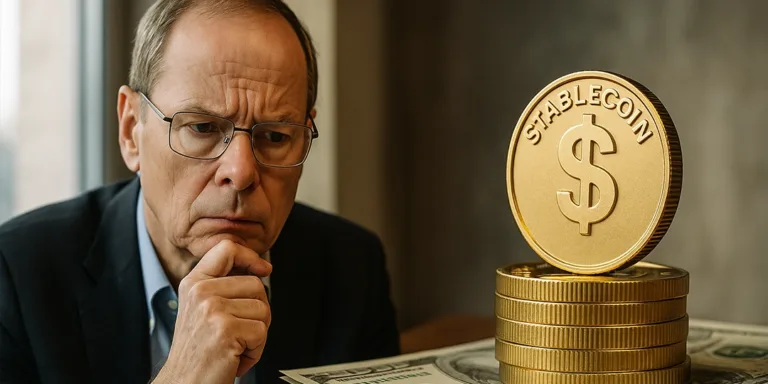While stablecoins might seem like safe digital dollars, weak rules and shaky reserves could turn them into a big financial headache.
In a recent interview with the Financial Times, Nobel Prize–winning economist Jean Tirole sounded a strong alarm about the dangers of stablecoins, particularly their potential to trigger costly taxpayer-funded bailouts in a crisis. He voiced concern over insufficient regulation and warned that the assets supporting stablecoins, such as U.S. government bonds, could lose value, potentially sparking a run by depositors.
The rise and risks of stablecoins
Stablecoins, such as Tether and Circle, are pegged to real-world assets and have become increasingly popular with retail investors. However, he warned that soft regulation could lead to these digital tokens as conduits of huge financial instability. The active growth of stablecoins, now $280 billion, is being helped by recent legislation in the U.S. that permits banks to issue their own dollar-based digital assets.
Citi predicts explosive growth ahead
Stablecoins are already globally utilized at $284 billion, and projections suggest their footprint could proliferate substantially in the next few years. Analysts from Citi, a multinational investment bank, expect the stablecoins market capitalization to top $1.6 trillion by 2030, and in an optimistic scenario, over $3.7 trillion. Even in the pessimistic scenario, growth would still be circa $500 billion. The U.S. Treasury has estimated a market size of $2 trillion for stablecoins as early as 2028. This highlights how significant and widespread the use of stablecoins may be in the future of global finance.
The potential for government bailouts
If stablecoins were to collapse during a financial crisis, governments would likely step in with multibillion-dollar bailouts to shield investors and institutions, the 2014 Nobel laureate told the Financial Times. He cautioned that many retail investors view stablecoins as “perfectly safe deposits,” but in reality, any loss of confidence in their reserves could spark a bank-run-style panic and break their peg to traditional currencies.
Is there a need for robust oversight?
The prize-winning scholar noted that meaningful supervision is important for mitigating the risk of stablecoins. In the absence of regulation, political and financial interests could restrict diligent supervision, giving rise to systemic risks. He commented on the disadvantages of holding U.S. government bonds, which are common reserve assets for stablecoin issuers. At times, yields on Treasuries have gone negative, after accounting for inflation, making them less attractive to issuers looking for higher returns.
Jean Tirole’s warning highlights the importance of a robust regulatory infrastructure to address the downside risk of stablecoins. Lacking true oversight, these digital tokens could become an additional source of financial instability that would increase costly public bailouts of the private sector. Strong regulatory guardrails will not only reduce risks but also unlock the full potential of stablecoins to transform global finance.












